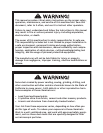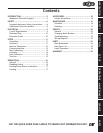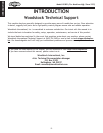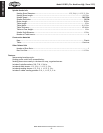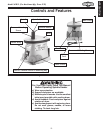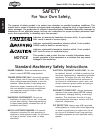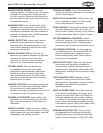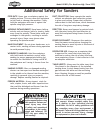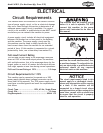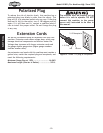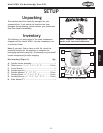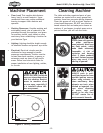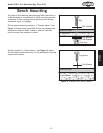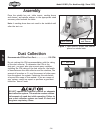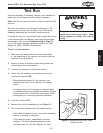
-8-
Model W1831 (For Machines Mfg. Since 2/12)
SAFETY
Additional Safety for Sanders
READ and understand this
entire manual before using
this machine. Serious per-
sonal injury may occur
if safety and operational
information is not under-
stood and followed. DO
NOT risk your safety by
not reading!
USE this and other machinery with caution
and respect. Always consider safety first,
as it applies to your individual working
conditions. No list of safety guidelines can
be complete—every shop environment is
different. Failure to follow guidelines could
result in serious personal injury, damage
to equipment or poor work results.
FEED RATE. Never jam a workpiece against the
sanding surface. This can cause the workpiece
to kick back or damage the machine. Firmly
hold the workpiece and ease it against the
spindle using light pressure.
AVOIDING ENTANGLEMENT. Keep loose clothing
articles such as sleeves, belts or jewelry items
away from the spindle. These items could get
entangled in the spindle, resulting in serious
personal injury. Never wear gloves when
operating the spindle sander.
HAND PLACEMENT. Do not place hands near, or in
contact with, sanding surfaces during operation
to avoid personal injury.
WORKPIECE HANDLING. Hold the workpiece
with both hands to maintain control while
sanding (or use an appropriate holding jig)
to reduce the likelihood of losing control of
the workpiece and having it thrown from the
machine.
SANDING SLEEVES. Worn or damaged sanding
sleeves can tear apart and become entangled
in the spindle or be thrown from the machine,
resulting in personal injury or property
damage. Replace sanding sleeves as required.
FOREIGN MATERIAL. Always inspect stock for
nails, staples, knots, and other imperfections
that could be dislodged and thrown from the
machine during sanding operations.
DUST COLLECTION. Never operate the sander
without an adequate dust collection system
in place and running. Proper dust collection
reduces dust in the work area, which decreases
the risk of long-term respiratory damage.
DIRECTION. Never sand tapered or pointed stock
with the point facing the feed direction to
avoid the workpiece being thrown from the
machine.
POWER DISCONNECT. Disconnect the machine
from the power source before changing the
sanding sleeve to avoid injuries in the event of
an accidental startup.
RESPIRATOR USE. Always use a respirator that
is approved for wood dust when using this
machine to reduce the risk of short and long
term respiratory illness. A dust collector is not
an adequate substitute.
TABLE INSERTS. Always use the table insert that
fits closest to the diameter of the installed
sanding drum. A pinch hazard exists from the
gap between the table and the oscillating
drum. Keeping this gap as small as possible
reduces the risk of this hazard.



